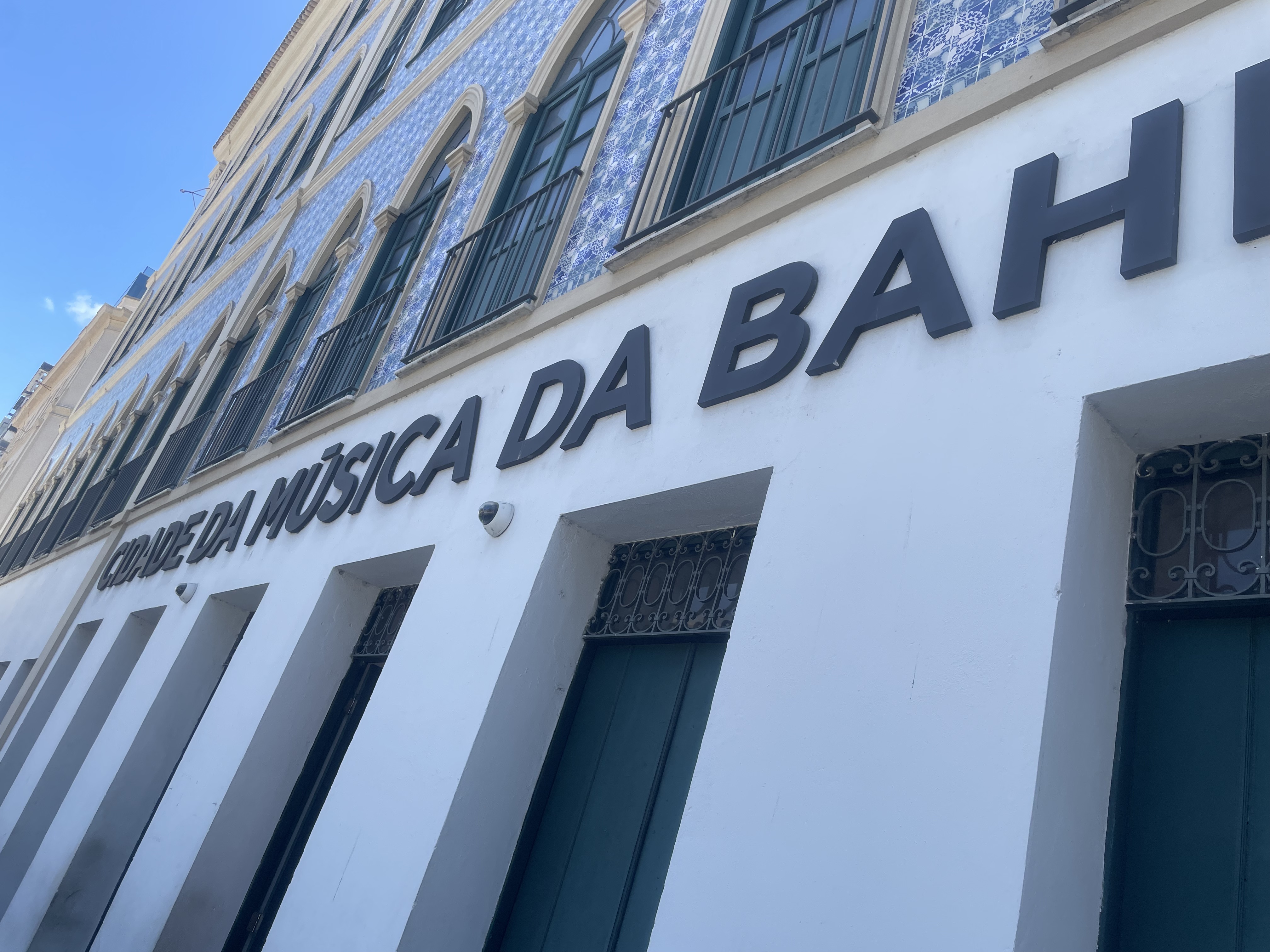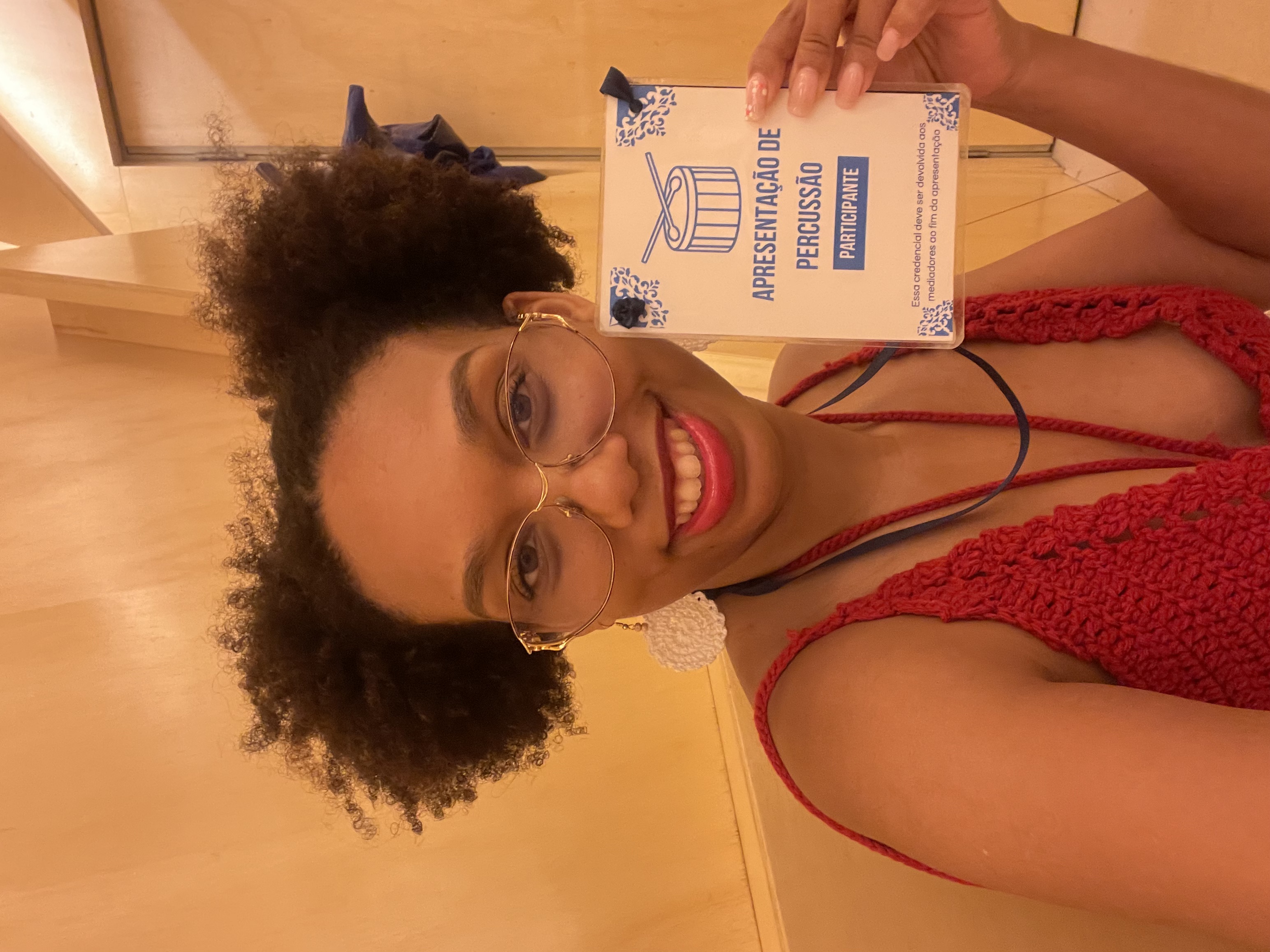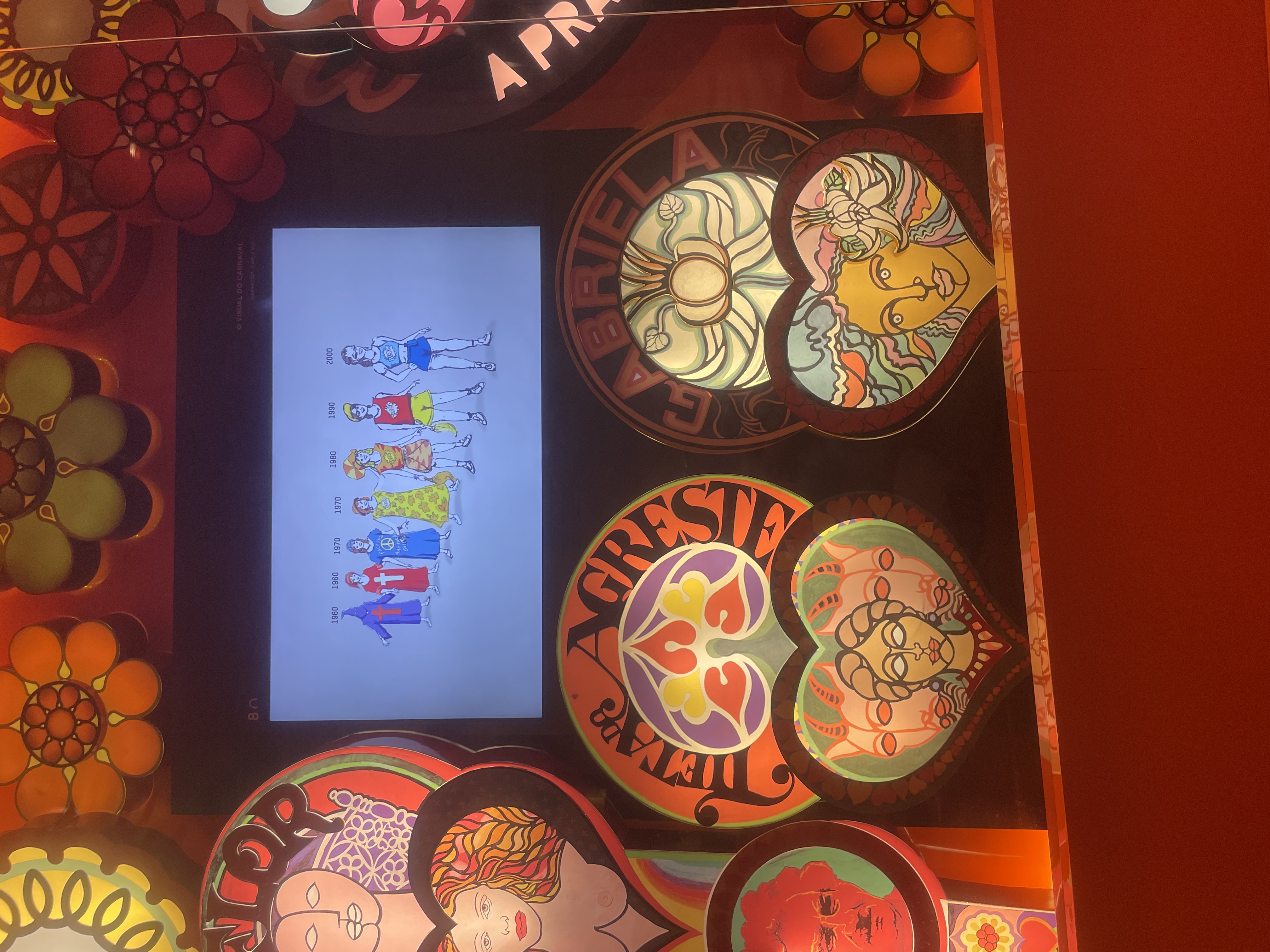There are cities where you hear music… and then there are cities where you feel it in your bones.
Salvador, Bahia is the latter. It’s not just a destination — it’s a rhythm, a movement, a heartbeat.
Recently named a UNESCO Creative City of Music, Salvador wears this title like a crown, and after visiting two of its most incredible museums : the cidade da música da bahia and Casa do Carnival — I get it. I really get it.
These museums aren’t just exhibits. They’re immersive experiences. They connect the dots between past and present, culture and resistance, joy and struggle , all told through the lens of music.
Let’s start with…
Cidade da música da bahia : A Sonic Tapestry of Bahian Identity

Tucked behind the Elevador Lacerda in Salvador’s Comércio district, the Cidade da Música da Bahia is more than a museum, it’s a celebration of sound. From the moment you walk in, you’re greeted by floor-to-ceiling visuals, soundscapes, and an architectural layout that draws you into the heart of Bahian musical traditions. This multi-level experience includes over 9 interactive video installations that explore the origins and evolution of Bahia’s unique sounds: from sacred chants to Carnival rhythms, from samba and axé to more experimental and classical compositions. Each screen is packed with stories, performances, and context that make it clear just how deep Salvador’s musical roots go.
What sets this space apart is how multi-dimensional it is. It’s not just about hearing music, it’s about understanding how it lives in daily life, spirituality, resistance, and innovation. You’ll learn how African traditions were preserved and reinterpreted in the rhythms of Candomblé, how samba-reggae emerged from Bloco Afro movements, and how local genres evolved into global forces. There’s even a section dedicated to the musical contributions of LGBTQ+ communities and women artists who have transformed the cultural landscape of Bahia. It’s one of the most inclusive, dynamic musical archives I’ve ever experienced.
One of the highlights of my visit was a spontaneous drumming session led by a staff member. As I tried to keep pace with traditional Carnival rhythms, I realized this wasn’t just a museum, it was a portal. That hands-on moment reminded me that music in Salvador isn’t a product to consume, it’s a practice to engage with. Just steps away, another exhibit let me try a karaoke version of Bahian classics, giving me the space to laugh, sing, and connect with the joy that fuels this culture. These interactive elements turn the visitor into a participant, which is exactly how music works here in Bahia.
Upstairs, there’s a beautifully curated section honoring producers, arrangers, and composers — the often unsung heroes of music. Through interviews, archival footage, and listening stations, the museum shows how behind-the-scenes creatives have been instrumental in shaping Salvador’s sonic identity. Whether you’re a vocalist, beatmaker, or just a curious traveler, the Cidade da Música offers a layered, emotional, and truly unforgettable journey. It doesn’t just show you why Salvador is a music city, it lets you feel it in your chest.

📍Travel Tip: Give yourself at least 1–1.5 hours here. If you love music and history, you’ll want to linger and soak in every screen, every interview, every layered track. Many exhibits offer audio in English if you scan the QR codes — just bring your headphones. Some staff also speak English and may offer a quick intro or context if you ask!
Casa do Carnival : The Ultimate Ode to Sound, Color, and Celebration

Just a short walk away, nestled beside the famous Catedral Basílica, is Casa do Carnaval, an equally immersive and electrifying experience that focuses on one of the most iconic expressions of Salvador’s music culture: Carnival. But let me be clear, this isn’t just a museum of floats and feathers. Casa do Carnaval goes deep into the roots of the celebration, showing how music, movement, fashion, and spirituality come together to create a cultural phenomenon that is at once playful and revolutionary. The museum starts with beautifully designed exhibits showcasing the evolution of Carnival costumes, sound systems, and the political messages embedded in the parades.
You’ll explore the history of Salvador’s most powerful Carnival movements, including the Blocos Afros like Ilê Aiyê, Olodum, and Filhos de Gandhy, which were born out of Black resistance and cultural affirmation. These organizations used music as a tool to reclaim identity and uplift Afro-Brazilian heritage, and Casa do Carnaval ensures that this message is front and center. Through video interviews, costume displays, and curated playlists, you begin to understand how deeply Carnival is tied to the people of Salvador, especially its Black communities who have led, innovated, and preserved these traditions despite generations of marginalization.
Then comes the immersive room and it’s a moment. You step into a circular space where Carnival scenes are projected floor-to-ceiling and wall-to-wall, accompanied by surround sound. You’re not just watching Carnival, you’re in it. You feel the drums. You see the dancers spin around you. The vibrant colors and collective joy are contagious, and for a moment, you feel like you’re marching in the bloco yourself. I stood there smiling, heart pounding, completely moved. It brought tears to my eyes. This wasn’t nostalgia, it was living culture, and the museum lets you embody it for just a few precious minutes.
Upstairs, you’ll find a rooftop café with stunning views of the bay and Pelourinho. It’s the perfect spot to process what you’ve just experienced while sipping a juice or espresso. Whether you're a first-time visitor to Bahia or returning with deeper questions, Casa do Carnaval leaves you with a new understanding of how music, costume, and celebration can carry generations of resilience, pride, and unity. It reminds us that Carnival isn’t just a party, it’s a spiritual, social, and musical movement that continues to evolve every year.

📍Travel Tip: Come ready to move — or at least sway a little. And stop by the café upstairs after the tour. It’s a peaceful spot to take it all in and grab a fresh juice or espresso while overlooking the city. Most videos include English-translated audio via QR code, and staff are friendly and helpful if you need context. They also have Headphones you could borrow to listen. I would bring a backup phone charger because i spent two hours in there and my phone did need some extre juice afterwards.
How These Museums Reflect UNESCO’s “City of Music” Recognition
UNESCO doesn’t hand out the Creative City of Music title lightly. This designation is given to cities that make music central to their cultural identity, economy, education, and innovation. not just as a product but as a pillar of community. Salvador lives and breathes this ethos, and the Cidade da Música da Bahia and Casa do Carnaval are two living proof points.
At Cidade da Música, you see how Bahia’s entire history is encoded in rhythm. from ancestral drums to digital beats. The museum honors the full spectrum of sound: sacred and secular, underground and mainstream, personal and political. At Casa do Carnaval, you witness how music mobilizes entire neighborhoods, channels centuries of Afro-Brazilian spirituality, and transforms public space into a stage for liberation. These aren’t just cultural centers, they’re community anchors and creative laboratories.
Both museums preserve, educate, and activate. They don’t just look backward, they invest in the future by passing down traditions and elevating emerging voices. They’re part of a larger ecosystem of schools, blocos, music houses, and spiritual centers that make Salvador an endless source of inspiration for artists, dancers, and dreamers. They help tourists become more than spectators: they help us listen, respect, and engage.
Together, they represent the beating heart of Salvador’s UNESCO recognition. not just because of the music you hear, but because of the worldviews you encounter. They’re the kind of places that change the way you travel… and maybe even the way you listen.
Why It Mattered to Me
As someone who created Travel Through Music, I’m always seeking out places where rhythm is more than sound : where it’s legacy, language, memory, and movement. Salvador is exactly that. My time at the Cidade da Música and Casa do Carnaval was more than just a museum visit, it was a transformative experience. I came in as a traveler and left as a student, a participant, and honestly, a fan for life.
At the Cidade da Música, I was reminded that Black music traditions are never static : they adapt, evolve, and speak across generations. At Casa do Carnaval, I felt what it means to dance with purpose. to move as a way of remembering and celebrating. These museums offered knowledge, but they also offered joy, healing, and a deep sense of connection.
They helped me understand why Salvador isn’t just another music city : it’s the music capital of the Afro-Atlantic world. And they made me feel proud to share that with my Travel Through Music community, knowing how many people are hungry for these deeper cultural experiences.
So if you’re heading to Brazil and your heart beats to the rhythm of culture : start here!
Start with these two museums. And let them guide you into everything else that Salvador has to offer.
I promise: you’ll never listen to Brazil the same way again.
Quick Travel Tips:
-
Both museums are located near Pelourinho . you can walk or take a short taxi/Uber ride.
-
Many of the video exhibits have audio in English. just bring your own headphones and phone to scan the QR codes or access the audio files. Super helpful if you don’t speak Portuguese!
-
At times, English-speaking staff are available and may offer a brief guided introduction or answer your questions. Don’t be shy, they’re super welcoming.
-
Entry fees are affordable — around 20–30 reais (roughly $5–6 USD).
-
Photos and videos are encouraged, but don’t rush. These museums are layered , you’ll want to take your time.
Want more music-inspired travel? Follow me on Instagram @TravelThroughMusicbox or check out the latest subscription box, inspired by the sounds of Portugal. Because around here, the passport is rhythm — and the journey is global. 🌍🎶
